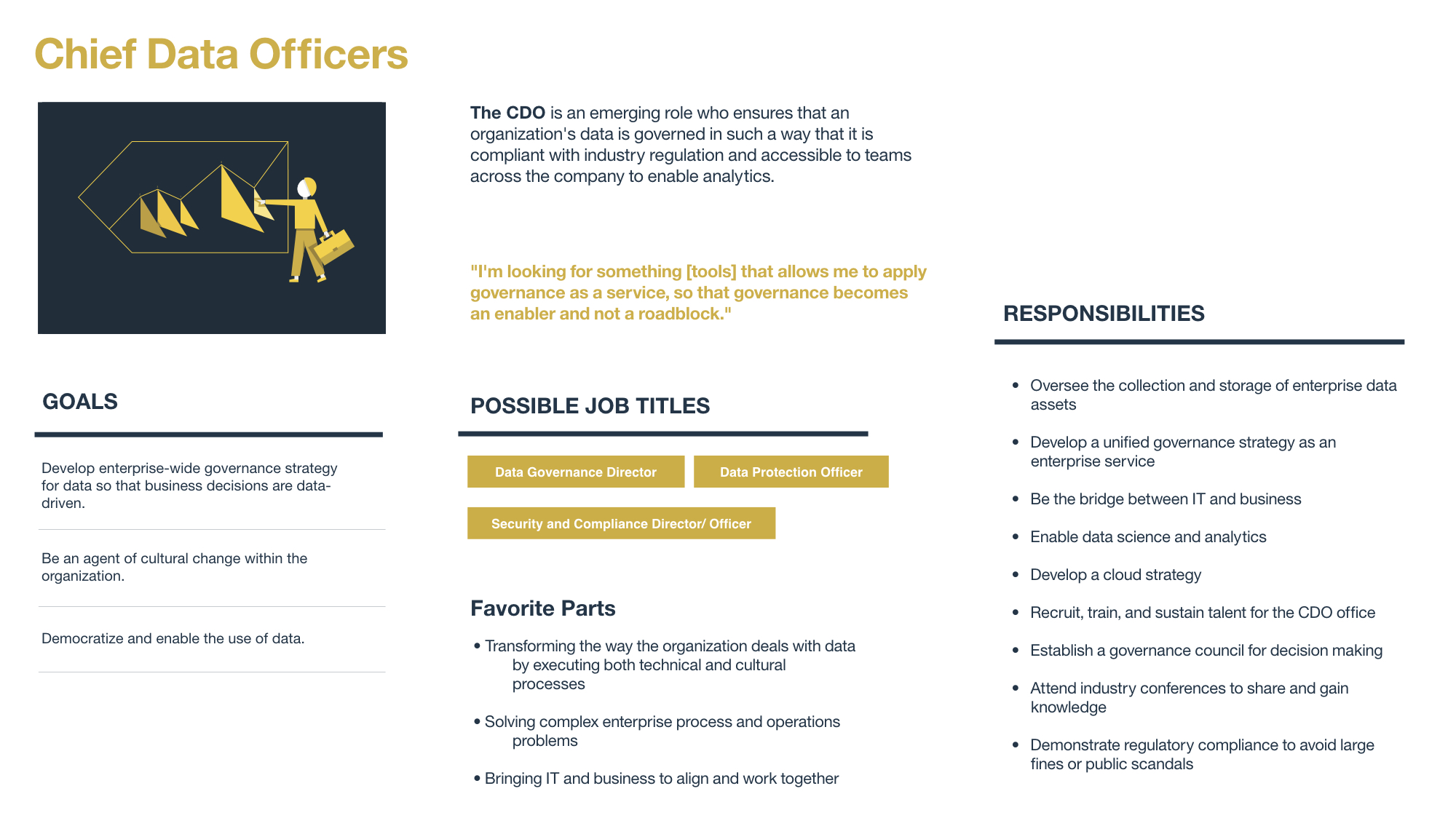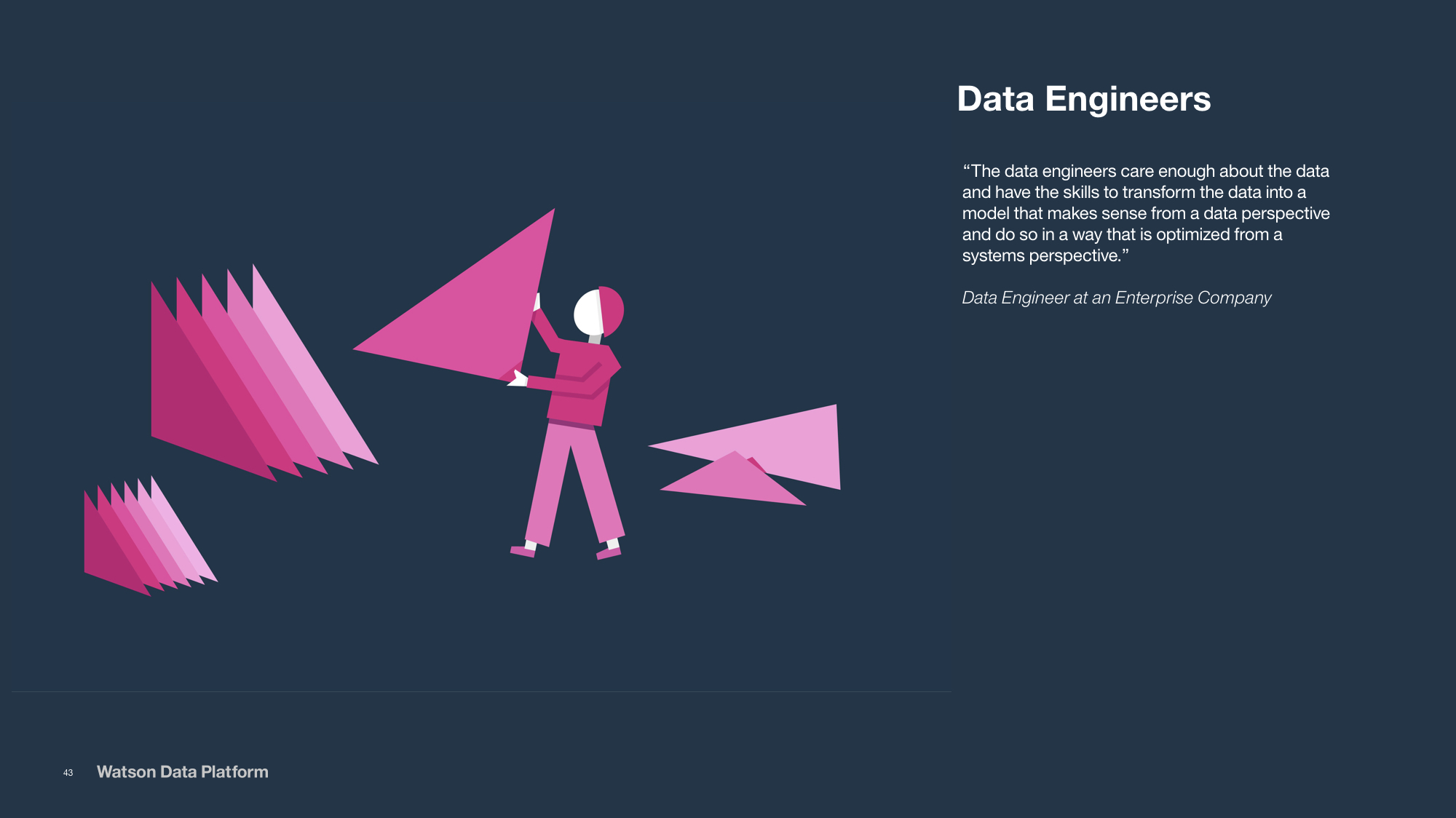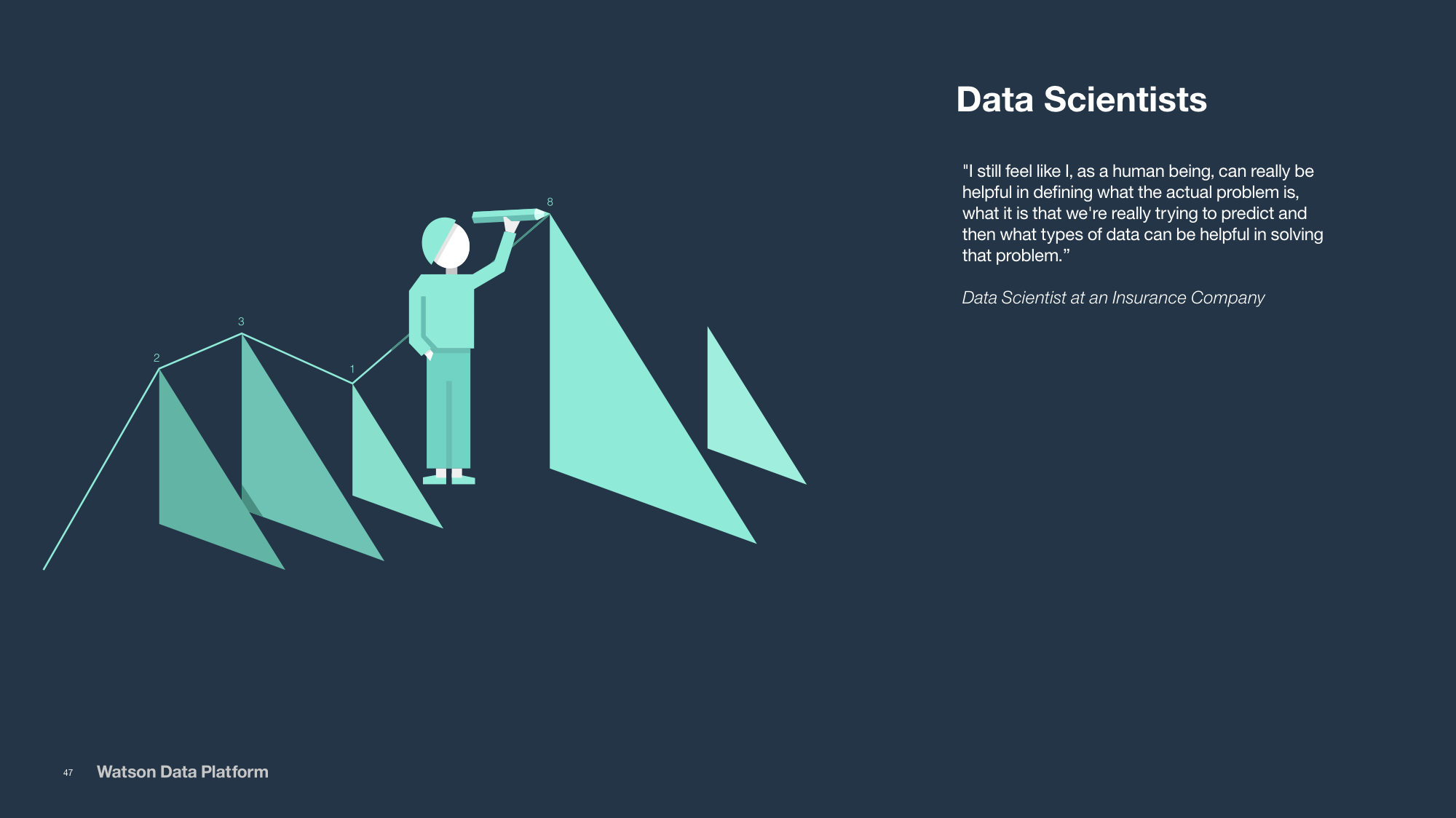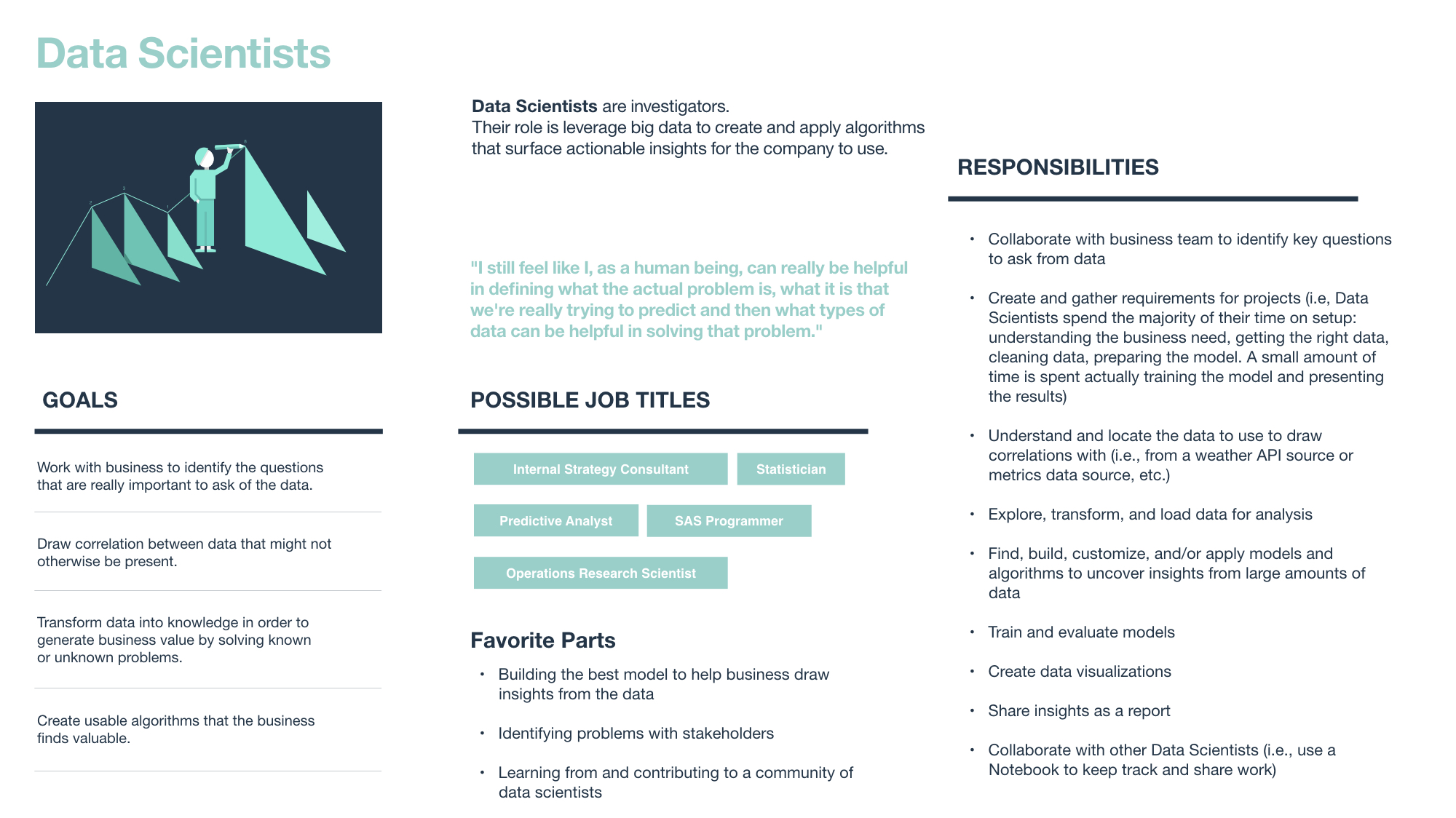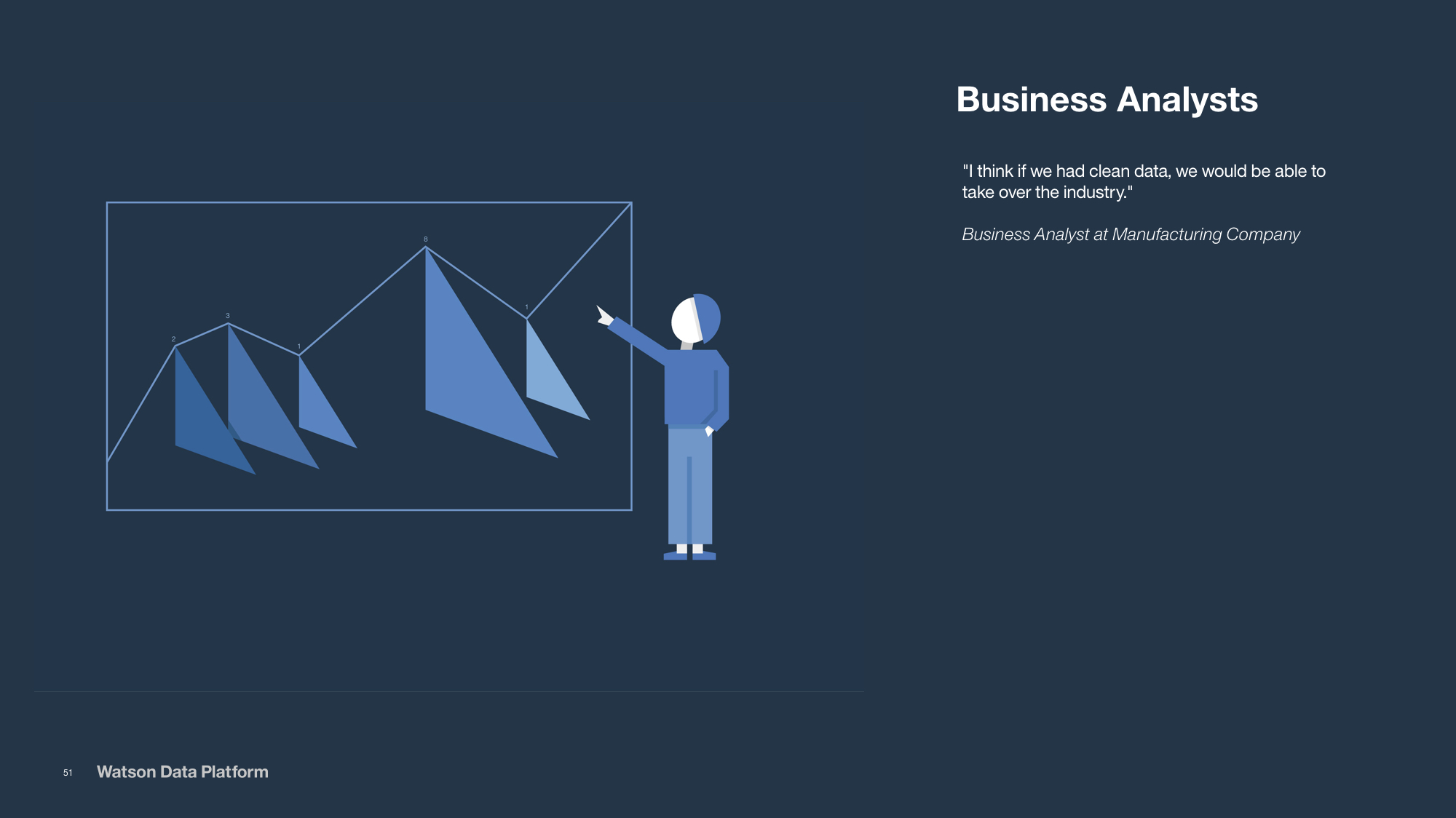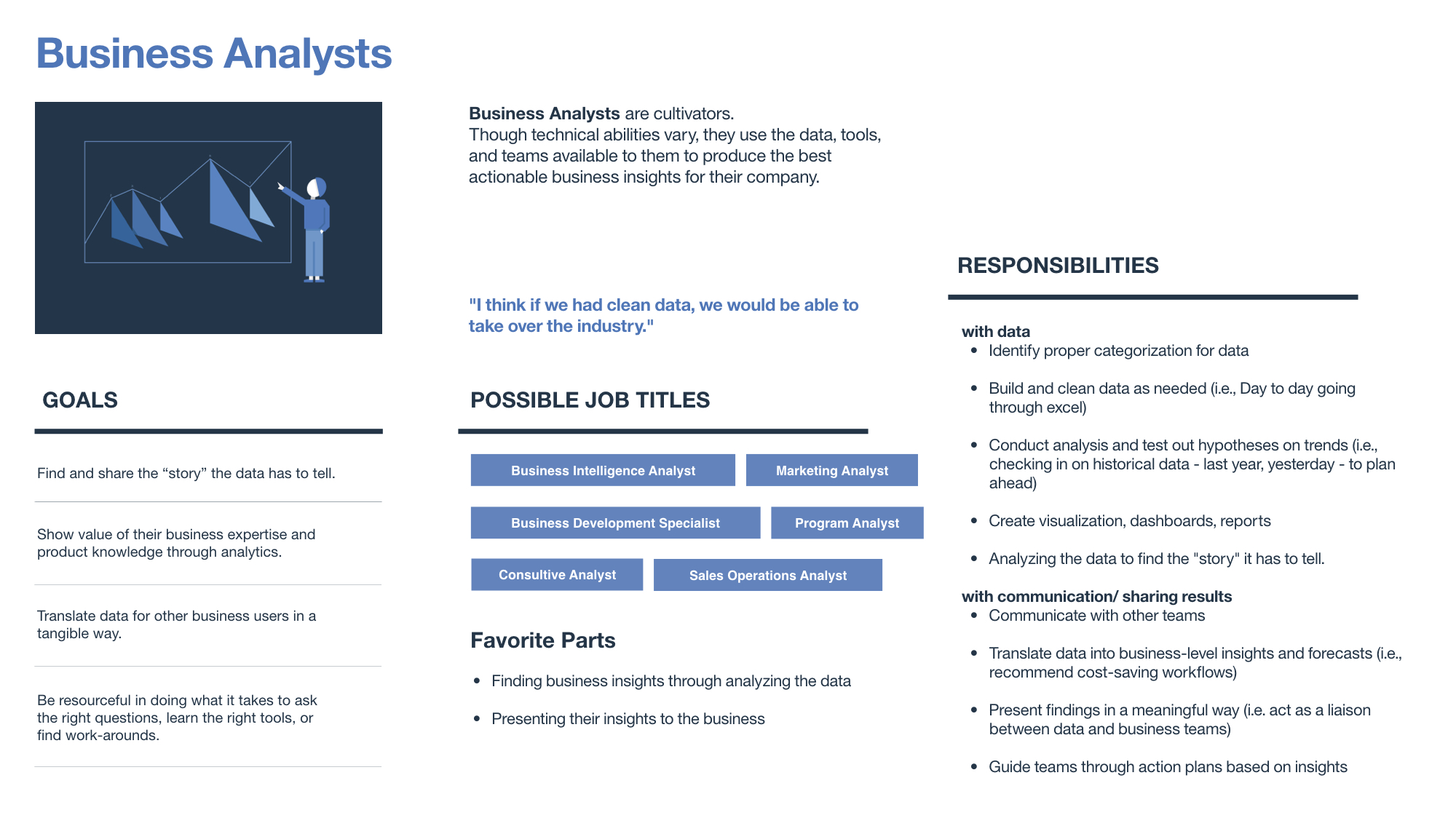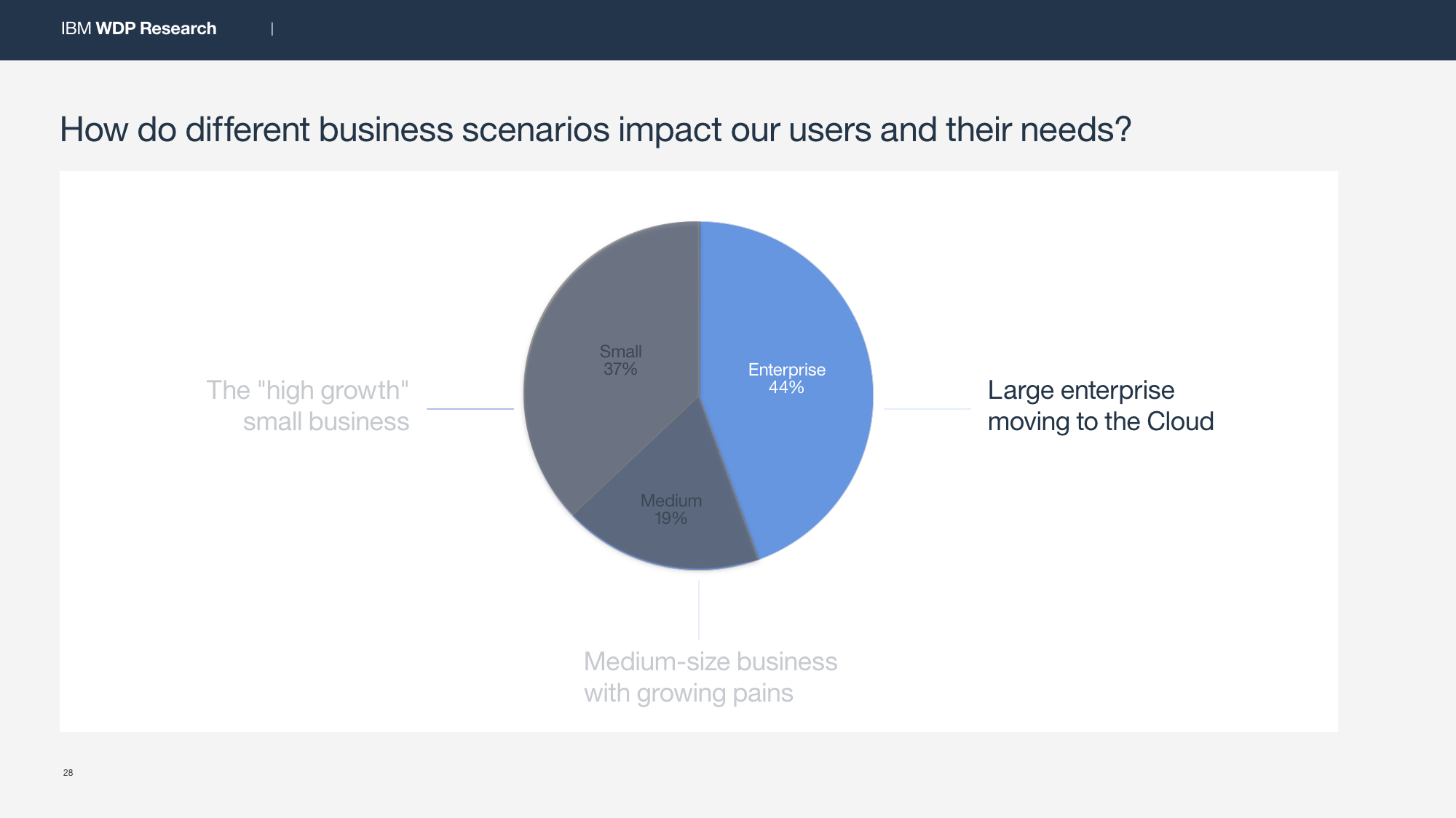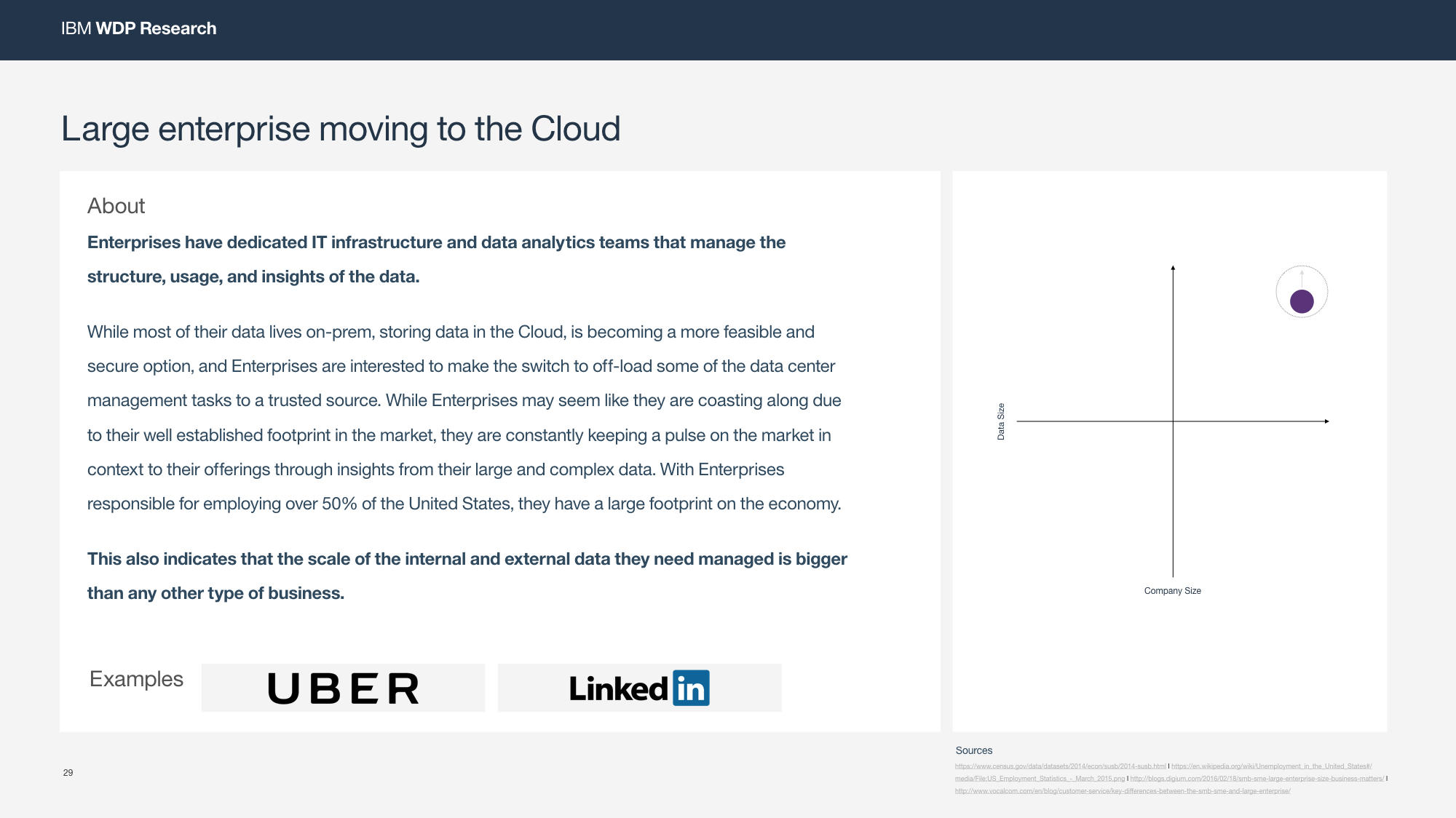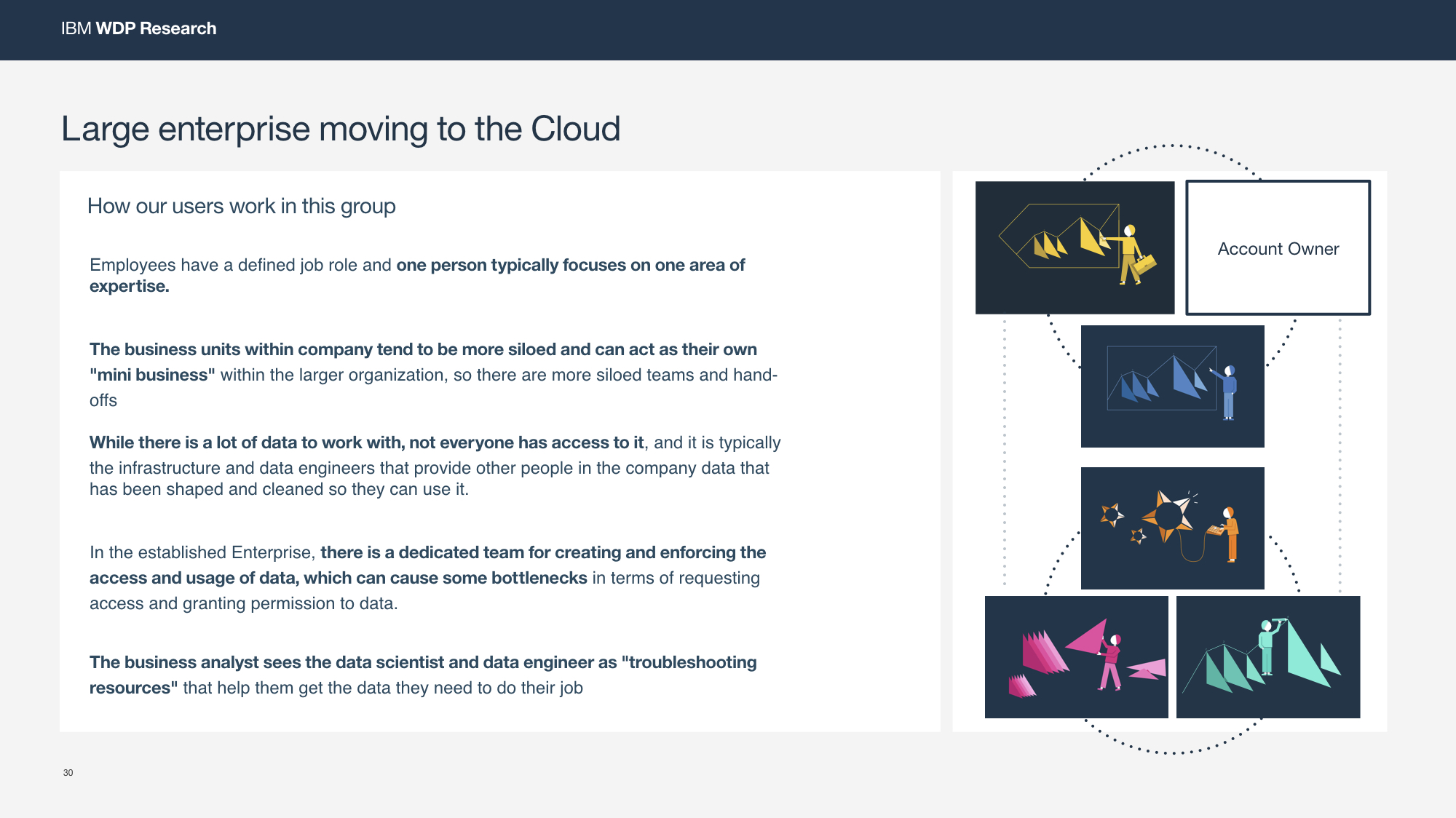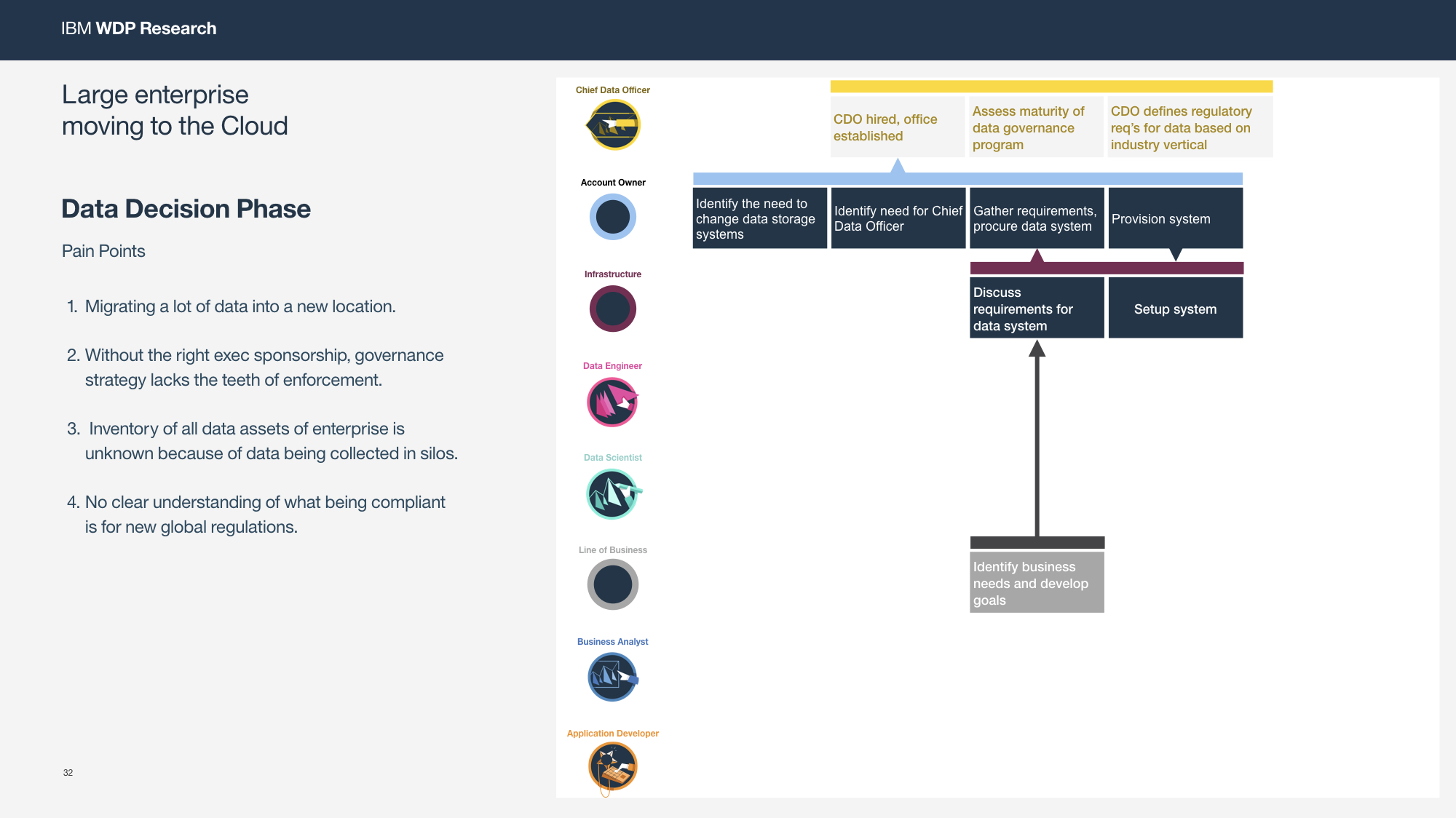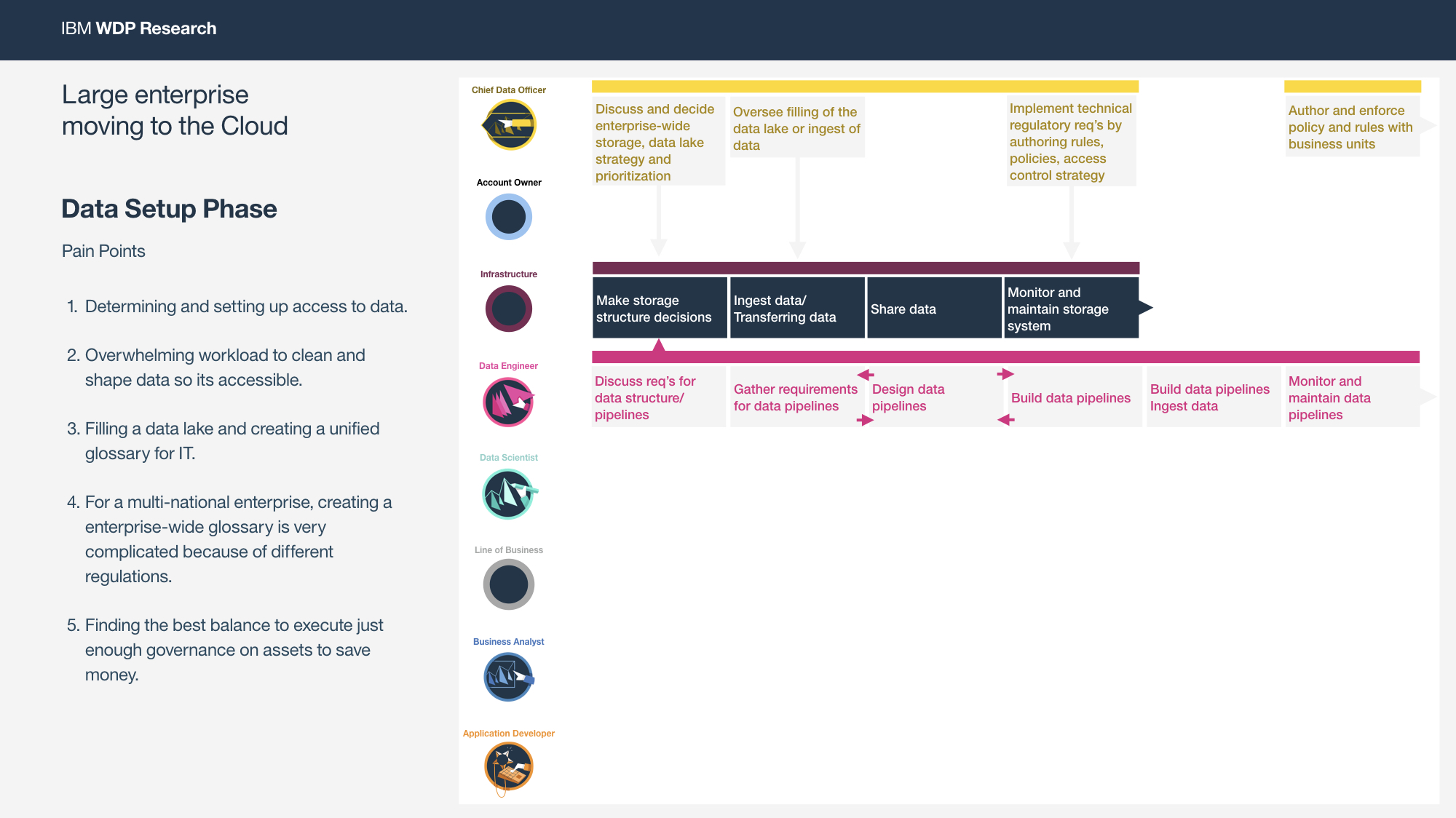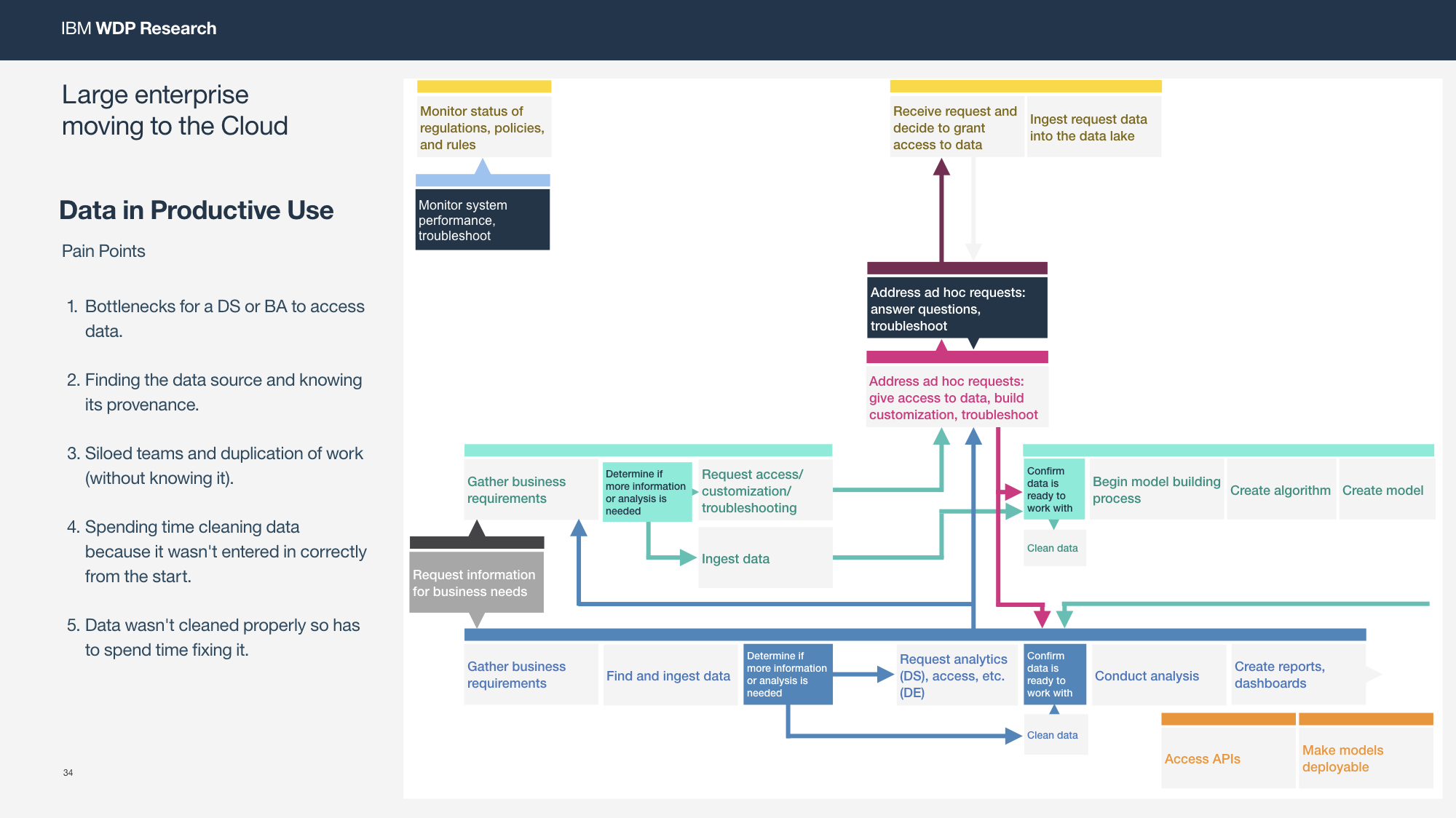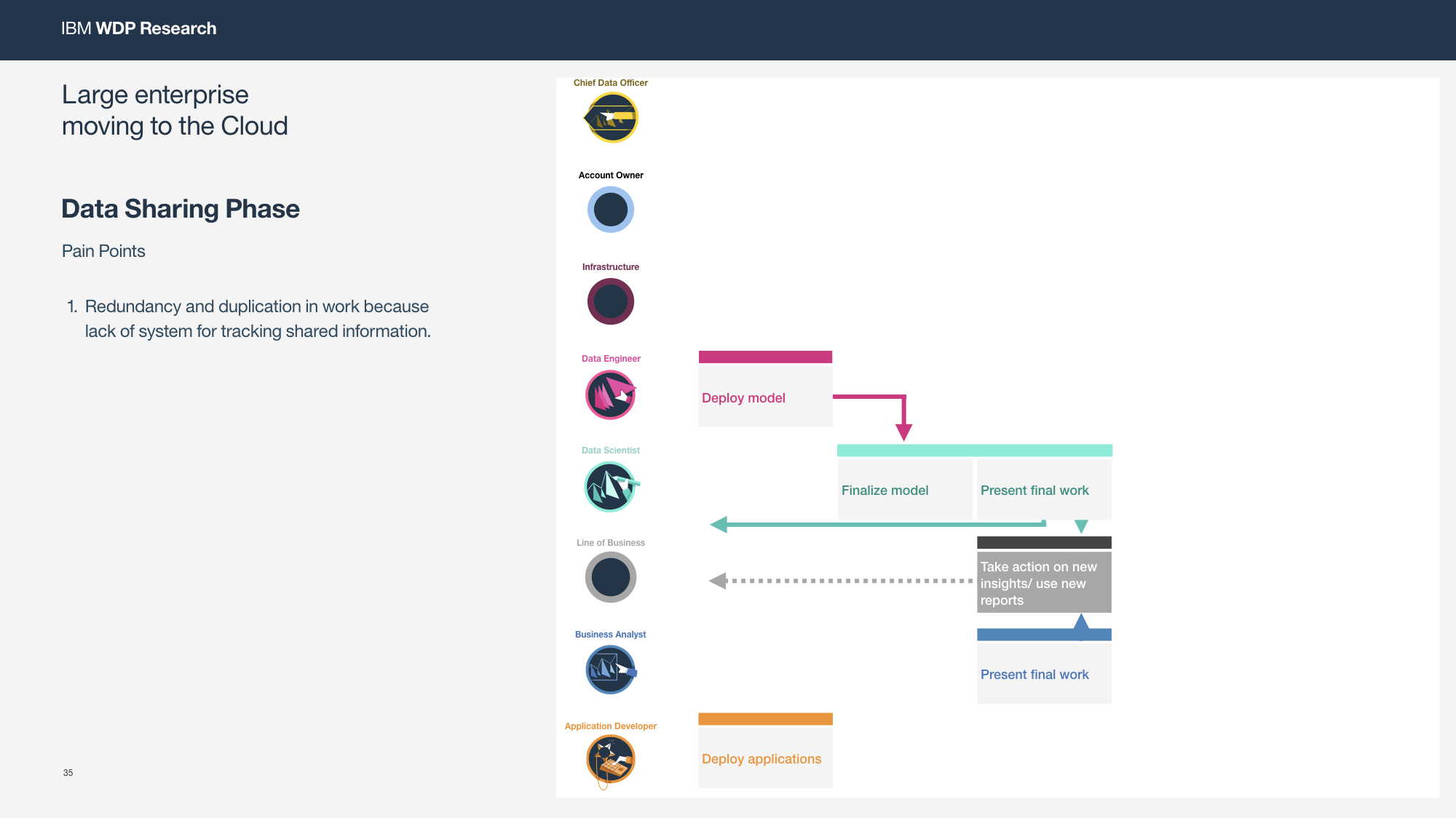Design Research @ IBM
A collection of design research outcomes, practices, and methods executed at an enterprise scale
At IBM, we know we're not our users. In order to create human-centered offerings, we identify user needs, pain points, and opportunities to create actionable insights for design, offering management, and engineering.
Our users are our North Star.
―
The Process: From Insights to Action
Good design comes from good research. A user-centric experience starts from understanding our users and prioritizing their needs and in effect, their experience above all else. Design research can help focus business and products requirements into actionable design deliverables.
A typical process can look like this:
―
The Research Brief
The research brief helps teams align on research objectives and identify what's working, what needs improvement, and new ideas from engaging users.
The brief is owned by the design researcher. However, through working with the design team and product management and engineering, I've found that folding the team into generating content for this brief creates alignment, buy-in, and an opportunity for collaboration.
Research briefs could include the following elements:
- Purpose
- Objectives
- Context
- Research Methods
- Owners and stakeholders
- Research timeline
- Discussion guide
- Interviewee list
- Recruitment Screener
―
User Personas
Who are our users?
To build user-centric products, we need to empathize with our users and understand them as people. Personas enables our team to know a person’s behaviors, context, individual differences, and external influences. This enables us to unite our user with business needs.
Most recently, I contributed to Watson Data Platform's (WDP) suite of personas with a brand new persona, the Chief Data Officer (CDO), which had no prior research or precedence. It was and still is a nascent role at large enterprises with the advent of big data.
Below showcases WDP's suite of personas and the CDO persona I contributed with the help of multiple researchers on our platform.
―
Enterprise Scale Design Research
For WDP's suite of personas, our team also did an overarching research and analysis of the different business scenarios in relation to our personas. This is the work of multiple researchers on our platform coming together to figure out how all the users connect together and use the our product.
This large effort was led by Virginia Honig, Research Lead and Frances DiMare, Design Researcher with all the researchers on the platform contributing their knowledge. Since I was responsible for the Chief Data Officer, I contributed the content for this persona.
―
Affinity Mapping
Affinity mapping is an exercise that can help create synthesis of user data, create research insights, and provide design recommendations.
Externalizing user data gathered from any research engagement (user interviews, contextual inquiry, surveys, etc.) on post-its will help put all research data points up on in physical space for researchers and designers to synthesize research by analyzing the big picture and dive deep into identifying patterns.
―
Research Synthesis Presentation
Once research is synthesized and research findings are paired with design recommendations, there is an all-hands presentation to offering management, engineering, and design.
These presentations bring our users voices directly to our team.
―
Stakeholder Research
Sometimes, design research can also help identify the challenges that teams face when collaborating in a global, enterprise company and provide recommendations.
Early in my career at IBM, I was working on Data Connect and on a project codename Butterfly. A fellow researcher and I noticed some underlying tensions and misalignment during our weekly team meetings, or 3-in-a-boxes (design, engineering, offering management) for the offering we were delivering. The team was not aligned on who our users were and what problems were were trying to solve for them.
Eventually, it showed in the design. And that's a problem.
We decided to dedicate some time in investigating where this misalignment moment was and looked inwardly within our team. In this case, our users were us.
We conducted and synthesized 18 stakeholder generative interviews to uncover and understand why there was a misalignment in the business requirements and priorities for an offering by identifying our teammates pain points and challenges.
Since this was a team effort, we folded in our Design Lead, UX Designers, and Visual Designers into the synthesis process. This is key in getting our users voices heard by every design team member.
From this synthesis we identified each discipline's key challenges and provided recommendations on how to move the team forward.
―
Meeting Users Face to Face
As the design researcher leading the data governance and Chief Data Officer work for Watson Data Platform, I was able to advocate for McKenzie Carlile, our UX Designer, and I to attend the IBM led Chief Data Officer Summit. We were the first ever designers to attend this summit.
At the IBM CDO Summit, we listened and talked to over 22 CDOs about their hopes, dreams, and fears. With McKenzie and Jay Limburn, our Offering Manager, we were able to show early design concepts of the governance offering to get initial impressions and feedback. We've been invited to the last 3 CDO Summits.
―
Designer + Researcher Workflow
As a design researcher, it's important to me to fold non-researchers into the research process. I fold our designers into the research process as much as I can so that every team member can both make informed design decisions based on research. All of the designers on my team have synthesized large amounts of data with me, taken notes during user interviews.
Because of this, once user research is synthesized and shared out to the team, our designers can immediately sketch and ideate on design concepts with user voice their foundation to inform every design decision. And if there isn't a clear user voice on a decision, then we know we need user research to set us on the right direction.


